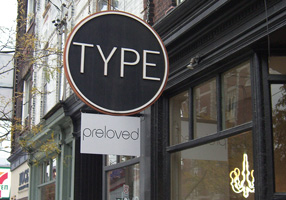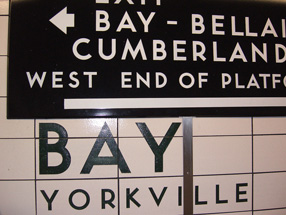I got back last Tuesday from a week in St. Petersburg, Russia, for this year’s ATypI conference. The theme of the conference was “The Old · The New,” and we saw plenty of both – not only in contrast to each other but in many varied forms of both old and new. Our two principal venues, for instance, reflected different current uses for old buildings.
The main program was held in a 19th-century palace, the “pink palace” or Beloselsky-Belozersky Dvorets, which is situated right on the corner of Nevsky Prospekt, the Fifth Avenue of Petersburg, and the Fontanka river, which reminded me of the Seine in Paris. Inside the pink palace, we had two highly decorated function rooms, one an auditorium and the other more of a big seminar room. The old wooden floors creaked when people walked in or out, but otherwise the sound was good. The foyer in between was where we served lunch and had the coffee breaks, and where people could mingle (one of the main functions of an ATypI conference). In the evenings, we adjourned to a very different venue: the Loft Project Etagi (it should be spelled “Etazhi” in English, but the Latinization must be based on French), a five-storey former bread factory that’s been converted into art galleries, boutiques, and culture-related offices. As their description puts it, “The conversion of the space was minimal; as a result, many industrial artifacts have been kept as part of the interior setting: cast-iron floors, tied concrete columns, a boring mill [stet], backing equipment, etc.” This sort of “downtown” arts space contrasted nicely with the faded elegance of the pink palace. We put up the various exhibitions on the second floor of Etagi, and Friday night’s exhibition opening was open to the public; it was jammed. Saturday night we took over the top floor, a modern art gallery with a wine bar, for the main conference party. (This was a more informal replacement for the “gala dinner” that ATypI always used to have.) It was a fine party. Briefly we had to stop everyone from having fun so I could thank all the organizers and sponsors, and so a representative from the government press & arts entity could give a short speech and hand out commemorative plaques. After the party closed, I accompanied a group of typographers to a nearby bar, where we talked and drank until nearly 4 a.m. As I put it on Sunday, “I can no longer blame my exhaustion on jetlag; this time I’ve earned it fair and square.” But I was up for the first talk the next morning, ready to kick things off in my official capacity.
Everyone seemed to agree that the conference went well. There was a certain amount of division between the Russian-speakers and the non-Russian-speakers, as in general one track was in Russian and the other in English, but there was also a fair amount of fluidity and overlap. (We were trying to plan things to encourage as much cross-communication as possible, but some sorting by language is inevitable.) I couldn’t even begin to describe all the things that people spoke on or presented; it was generally a very good program. I ended up being the MC for one track some of the time, so I couldn’t be as flexible as an ordinary attendee in deciding which track to follow. And being president of ATypI, I was always feeling responsible, even when other people were actually carrying out the tasks.
Leaving on Tuesday meant that I had one full day free, after the end of the conference; and Monday turned out to be a gorgeous sunny day, not a cloud in the sky and temperatures around 60°F. I visited the Russian Museum, where I made a beeline for the 20th century art and found two iconic paintings of Anna Akhmatova; I also ran into a couple of people from the conference there. Otherwise I strolled up and down and over the canals, admiring the 19th-century buildings, most in a classic Italian style, and wandered through the Mikhailovsky Gardens and one end of the Summer Garden, past the brooding palace known as the Engineers’ Castle, finally enjoying a cup of coffee outside a Seattle-style coffee company (a local chain called “Coffee House”) on Malaya Sadovaya Street in the sunlight. Earlier, on Wednesday, after checking in with our conference director and making sure there wasn’t anything I needed to deal with, I walked my feet off (the long, wide avenues do go on a long way) and visited the Hermitage, where I finally got to reacquaint myself with the Van Gogh that I had first seen in DC in 1973, in a tour called “Impressionist and Post-Impressionist Paintings from the USSR.” That painting had brought tears to my eyes thirty-five years ago; today it didn’t, but still I spent ten or fifteen minutes just looking at it. I also renewed acquaintance with a number of other paintings that had been in that exhibition (Derain, Cézanne, Matisse) and saw many more that had not gone traveling.
[Photos, top to bottom: transport: the old, the new; the second book printed in Cyrillic (Krakow, 1491); Oleg Genisaretsky delivering the keynote address; School #308; advertising poster at a bus stop on Nevsky Prospekt – another take on the old, the new.]
Categorized as events, science & art, type designers, typography |



